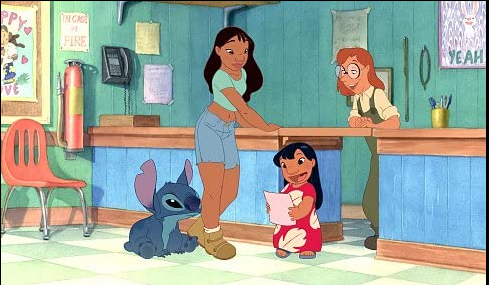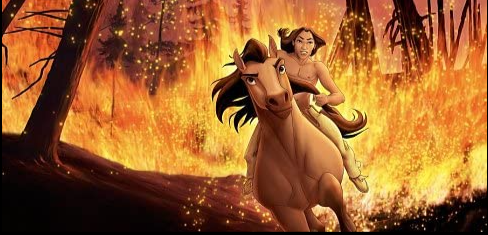Just as Pixar was beginning to take over the animated film space with movies like Toy Story and Monsters Inc and Finding Nemo just under a year away, Disney and DreamWorks released films in the same week that would go on to change the course of animation history.
Putting aside the Pixar films, Disney hadn’t had a great couple of years with their animated releases. Atlantis: The Lost Empire and The Emperor’s New Groove both failed to dominate the box office even if they are treasured classics today. So, Disney needed a hit, a big hit, and that came with Lilo and Stich being released on the 21st of June 2002.
DreamWorks were in a vastly different boat to Disney; they obviously didn’t have the 80 years of history that Disney had and, as such, were at a disadvantage. The studio had only released five films at that point in 2002, with Shrek being their biggest grossing film by far.
While DreamWorks didn’t have the history, it did have some stunning films. The Prince of Egypt was visually stunning. While Chicken Run’s claymation style would define that genre for a decade at least but what separated DreamWorks from Disney was the original storytelling that Disney had been struggling with.
Almost every film from Disney over the last 50 years was based on someone else’s work. Whether that be the classic fairy tales such as Cinderella, Beauty and the Beast, The Jungle Book or even the Shakespeare-based Lion King. So, Disney was also looking for something different, something original.
Both studios must have decided at the same time to go for that original storytelling with Disney’s Lilo and Stich and DreamWorks Spirit: Stallion of the Cimarron. While they are two entirely different movies, they both allowed a different and original story to be told while giving us those beautiful visuals which still hold up today.
Lilo and Stich
Unlike many films of the time, Lilo and Stich didn’t have the enormous budget that Disney was pumping into many of its other projects. This actually turned out to be a blessing, with the studio unable to use the big-budget CGI which defined many of its movies of the previous decade.
Instead, the studio went for a watercolour pallet which perfectly encapsulated the picturesque setting of Hawaii beautifully. The watercolours almost made it look like a storybook, really appealing to younger children. This appeal led to Stich becoming one of Disney’s most successful merchandising products of all time.
The watercolour style hadn’t been used since Dumbo during World War II, so it would be a significant risk for the studio. The benefit, of course, was the lower budget and the fact that the animation team was based in Florida rather than Hollywood.
This geographical distance allowed the team to work almost unsupervised with executives not really interested in this little side project based out of the Disney World. The lack of supervision allowed the team to move past the ‘traditional’ Disney storytelling structure.
Every film in Disney’s history was about one thing, a child struggling to grow up after one of their nuclear family parents had left or passed away. Lilo and Stich changed this by having no parents and instead an older sister looking after the younger sister. With such a strong relationship between sisters, it could be argued that Lilo and Stich was the original Frozen.
What Lilo and Stich also did differently was allow a redemption arc for its protagonist. Traditionally a Disney movie would always finish with the death or disappearance of the villain; think Scar falling off the cliff in The Lion King.
The two main themes we saw here are that family can be anyone and everyone; family goes deeper than just who you are related to. And that people or, in this case, aliens are complicated and have different motivations have proven to be vitally important over the next two decades of animated storytelling.
These two themes are still evident today, with the idea of family consistently now being explored by Disney. In addition, allowing redemption story arcs in children’s films has allowed kids’ films to become less predictable and, overall, just more interesting.

Spirit: Stallion of the Cimarron
It’s fair to say Spirit didn’t have the box office success of Lilo and Stich but what it did have was a mysticality about it, especially with the hand-drawn style which it has become famous for over the 20 years. Much like Lilo and Stitch, the relativity low budget for Spirt allowed some more risks from the young up-and-coming studio.
Spirit was a heavy time investment for the studio, with more than four years passing between the inception of the idea and the release in 2002. Unlike Lilo and Stich, where hand-drawing allowed a quicker production process, drawing for Spirit was highly time-consuming and challenging.
Head animated for the film James Baxter told the World Animation Network in 2002: “I literally spent the first few weeks with my door shut, telling everyone, ‘Go away; I’ve got to concentrate.’ It was quite daunting because when I first started to draw horses, I suddenly realised how little I knew.”
While the horses look beautiful on screen, the wide-sweeping shots have influenced how animated films would be produced over the next 20 years. Previously animation had largely been tight shots of the main character to reduce the number of hours required animated. This would change with Spirit; throughout the film, we see sweeping images from national parks such as Yellowstone, Yosemite, and Glacier.
Watching Spirit is a soothing experience, with the lack of dialogue being an incredibly effective technique, even if it hasn’t picked up in popularity since the film’s release. Unlike many animated films, the horses and other animals do not speak English. The only words we hear from the titular character are the inner thoughts as described by Matt Damon.
One of the most effective techniques used in this film and one that has translated to today is the soundtrack. In a movie where the characters didn’t speak, the music would always be important.

While this wasn’t the first movie to get a pop star to release the soundtrack and music to be used in the film, it is one of the best examples. The combination of Hans Zimmer and Bryan Adams perfectly encapsulated the feeling of freedom and respect for the animals this film was trying to convey.
While plenty of the inspiration for doing an Adams-led soundtrack came from Phil Collins doing the Tarzan soundtrack. What Spirit did was make sure that the combination of pop stars and animated soundtracks would be one to stay.
Spirit is a movie that didn’t receive all of the love it should have when first released, but DreamWorks has capitalised on it over the last five years. Both a Netflix TV show and a theatre-released film based on its properties have put the company in a good spot after several more recent failures at the box office.
These smaller budget and original films have played a considerable part in the advancement of animated films over the last 20 years. It just goes to show that not every movie has to be an existing property, a prequel, or a sequel. Hopefully, studios will be willing to take a few more risks on smaller budget films in the future.
